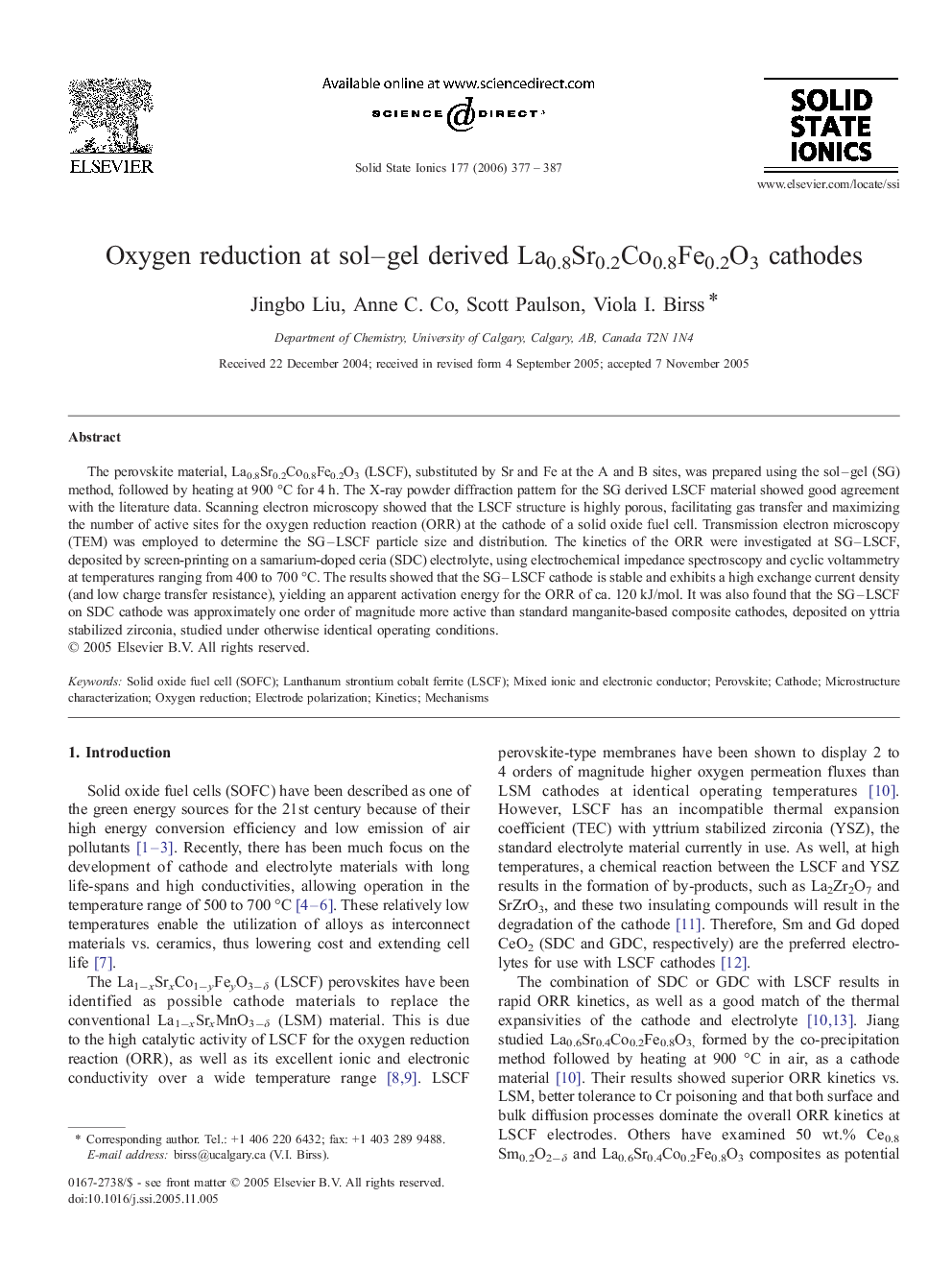| Article ID | Journal | Published Year | Pages | File Type |
|---|---|---|---|---|
| 1295677 | Solid State Ionics | 2006 | 11 Pages |
The perovskite material, La0.8Sr0.2Co0.8Fe0.2O3 (LSCF), substituted by Sr and Fe at the A and B sites, was prepared using the sol–gel (SG) method, followed by heating at 900 °C for 4 h. The X-ray powder diffraction pattern for the SG derived LSCF material showed good agreement with the literature data. Scanning electron microscopy showed that the LSCF structure is highly porous, facilitating gas transfer and maximizing the number of active sites for the oxygen reduction reaction (ORR) at the cathode of a solid oxide fuel cell. Transmission electron microscopy (TEM) was employed to determine the SG–LSCF particle size and distribution. The kinetics of the ORR were investigated at SG–LSCF, deposited by screen-printing on a samarium-doped ceria (SDC) electrolyte, using electrochemical impedance spectroscopy and cyclic voltammetry at temperatures ranging from 400 to 700 °C. The results showed that the SG–LSCF cathode is stable and exhibits a high exchange current density (and low charge transfer resistance), yielding an apparent activation energy for the ORR of ca. 120 kJ/mol. It was also found that the SG–LSCF on SDC cathode was approximately one order of magnitude more active than standard manganite-based composite cathodes, deposited on yttria stabilized zirconia, studied under otherwise identical operating conditions.
